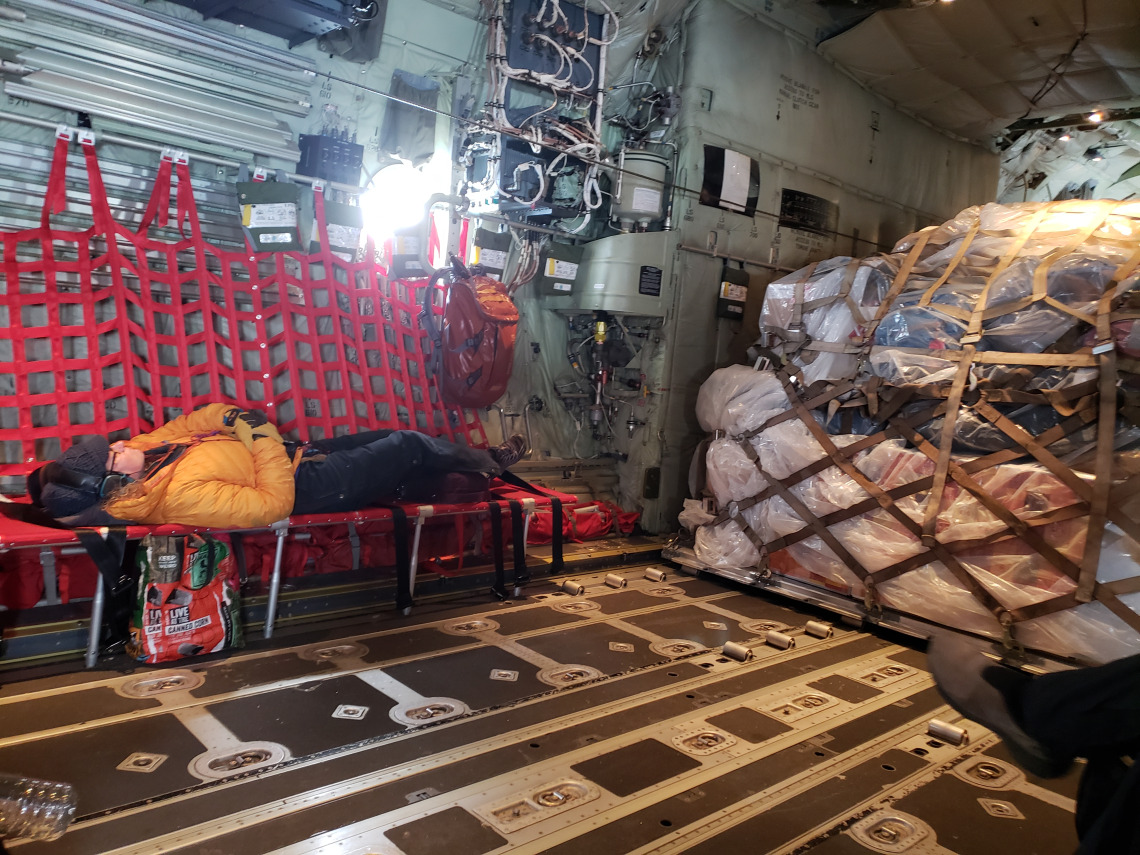The Huddle Test
Our last chance to test our experimental set-up in the warm

As a team we have been working out our “traveler muscles” for the last week while we wait for good enough weather to travel. This looks like reps of “patience” and “showing up on time” while maintaining good humor. You can see Erin’s patience pose in the photo below! You can also see one of our three large pallets of cargo. It is hard to travel light when we have to bring everything for living as well as all of our gear for science.
We finally made it to the last staging area for the trip: Thule Air Base. All of our cargo was unloaded and stashed in a warehouse for us to review, repack and test. We broke down our pallets and spread out all of our gear to make sure it all arrived. Here are a couple photos showing some of the gear. The orange boxes are our seismic stations. Each one has a battery and a little solar panel to run the systems over the summer. We certainly don’t want to find out when we get to the field site that we forgot something. Besides being embarrassed, it can make it much more difficult to get the data we are looking for.
As the instrument guy on the crew, I’ve been taking the seismic instruments and recorders out of the boxes, checking that we have everything and building up the system the way we plan on installing in the field. It is easier to work in the warehouse then in the field, so we try to get as much of the systems configured here as possible. We ran all of the sensors overnight to check for problems or possible damage from the trip to the airbase. We didn’t find any problems, so all of the gear gets packed for the helicopters. The repacking may seem inefficient, but different kinds of transport require different styles of packing. Long journeys on big cargo planes mean you need big tough boxes with plenty of padding, but shorter trips on helicopters you re-optimize for lighter weights.

